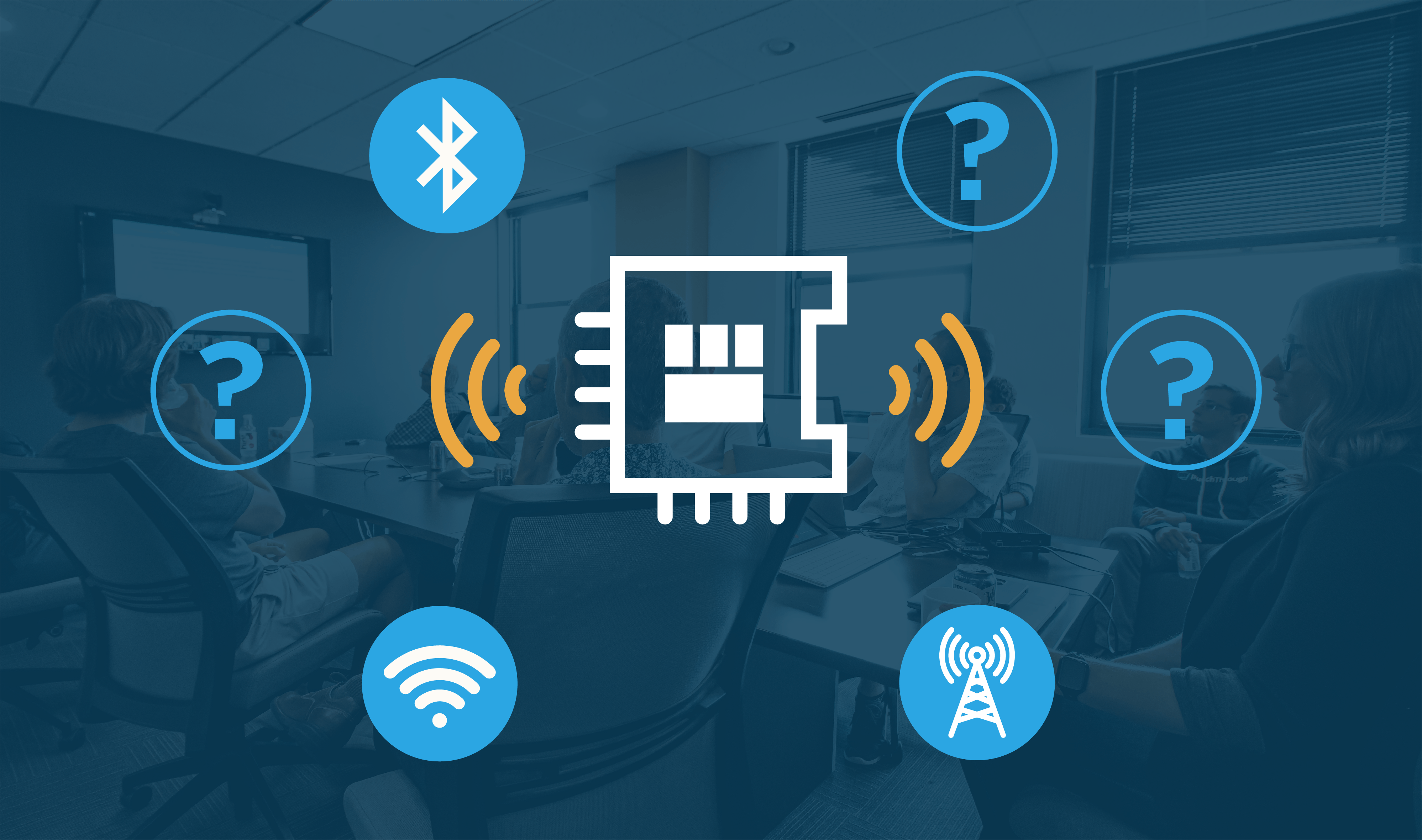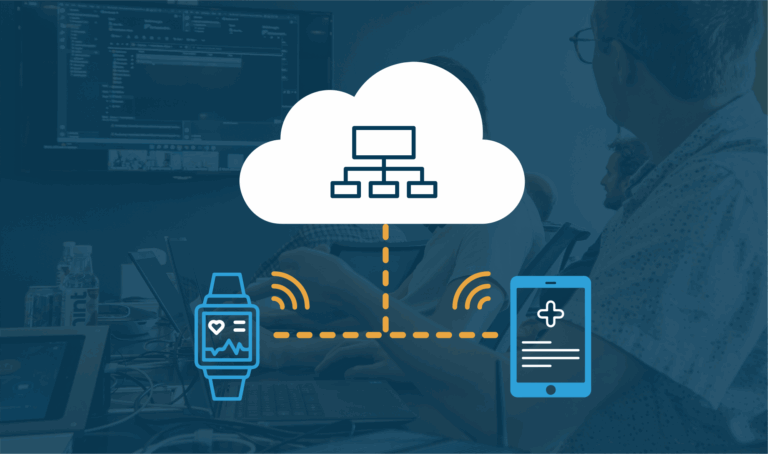So you’ve connected to a BLE device, now what?
If the connection is only meant to access characteristics that don’t require security, you might be done. But in many cases, especially where private data, sensitive control, or long-term device relationships are involved a connection alone isn’t enough. That’s where pairing and bonding come into play.
These two terms are often used interchangeably, but they represent distinct steps in how BLE devices establish and maintain secure communication. To complicate matters, these steps are handled differently on Android and iOS, so understanding those differences is key when working across both platforms.
This article breaks down the differences between pairing and bonding, how they’re triggered, and how to think about them based on your use case.
Pairing vs. Bonding: Key Definitions
To keep the platform differences clear, we’ll use the following definitions.
- Pairing negotiates a security method, exchanges keys, and creates an encrypted session for the current connection.
- Bonding stores the keys produced during pairing so future connections can start encrypted and authenticated without repeating pairing.
All bonded devices have been paired. Not all paired devices are bonded. Bonding happens only when the devices choose to retain keys. Think of pairing as agreeing on a code for this conversation. Bonding is saving that code so you can pick up where you left off next time.
With that shared language, we can look at how pairing and bonding are triggered on Android and iOS, and when each is actually needed.
How Pairing Starts
Pairing isn’t something you usually call directly in your code; it happens as a natural result of how your app and firmware interact. When a device requires secure communication, the BLE stack responds by prompting the devices to establish that security through pairing.
Pairing begins when one of two things happens:
- Your app tries to access something that requires security. If your app attempts to read or write to a characteristic or service that requires encryption, the system will start the pairing process so that the operation can proceed securely.
- On iOS, this happens implicitly. You don’t need to manually trigger pairing.
- On Android, pairing may start automatically, or you can explicitly request bonding using methods like
createBond()if you know it will be needed.
- The peripheral requests security. Sometimes, the peripheral itself demands a secure connection before allowing an operation. In these cases, you might see error responses like
GATT_INSUFFICIENT_AUTHENTICATION or GATT_INSUFFICIENT_ENCRYPTION. These don’t automatically trigger pairing. Instead, they signal to the central device (e.g., your app) that it must initiate pairing to continue.
Understanding when pairing begins lays the groundwork for deciding what type of trust model your device should follow. Next, we’ll look at when pairing alone is enough versus when a persistent bond is essential.
When Pairing Alone Is Enough
Pairing without bonding is useful when you want to secure a session only for the duration of the current connection. This approach keeps things lightweight and avoids persisting any data that could pose privacy concerns later.
Some examples include:
- One-time secure sessions: Think smart gym equipment, hotel room controls, or kiosk-style BLE devices where users connect temporarily and expect no trace of that connection afterward.
- Demo or trial devices: In product showrooms or test environments, pairing lets you enforce security without managing cleanup of bonded devices later.
- Shared public devices: In situations where devices are used by multiple users (e.g., in clinical settings, shared tablets, rental hardware), avoiding bonding helps reduce data persistence and potential exposure between users.
In these scenarios, you’re using pairing for ephemeral trust: secure while connected, forgotten once disconnected.
When Bonding Is Necessary
Bonding becomes important when your BLE device needs to establish an ongoing, trusted relationship with a specific user or client device.
Use cases that often rely on bonding:
- Wearables and medical devices: Devices like smartwatches, glucose monitors, or hearing aids rely on seamless reconnection. Requiring users to re-pair every time would be a terrible UX and in some cases, technically infeasible.
- Persistent access to authenticated features: Devices that expose characteristics only after authentication need a way to preserve access across sessions. Bonding lets you skip re-authentication on every reconnect.
- Security-sensitive domains: In regulated environments (e.g., healthcare), bonding helps meet data protection requirements by ensuring that only previously authenticated devices can reconnect and resume secure data exchange.
- User experience: Bonding significantly reduces friction during reconnection. For example, on Android, if a device is already bonded, the OS can automatically reconnect and start encrypted communication without user prompts.
In essence, bonding is about retaining trust. It’s the right tool when your app or device architecture assumes long-term ownership, continuity, or regulated protection of BLE communications.
Where to Go Next: Building on iOS or Android
Knowing the difference between BLE pairing and bonding is only the first step. The next challenge is putting that knowledge into practice because how these processes behave isn’t just different between iOS and Android, it can also vary widely across OS versions and even between devices.
If you’re ready to start implementing, it helps to understand how each platform handles security and bonding at a deeper level:
- Apple’s iOS Core Bluetooth: The Ultimate Guide: Pairing is automatically triggered when encrypted attributes are accessed, and bonds are managed at the OS level. This makes the process seamless for users but introduces nuances you’ll need to account for, like how bonds persist across app reinstalls or device updates. The Pairing and Bonding section of our iOS BLE Guide explores these behaviors and how to design around them.
- Android BLE: The Ultimate Guide: Bonding isn’t automatic. You’ll need to decide when to explicitly request bonding with createBond() and then manage bond state across a range of devices and OEM-specific quirks. The Bonding With a BLE Device section of our Android BLE Guide explains these APIs and offers guidance for handling edge cases.
As you work through these flows, it can be helpful to have a simple way to confirm whether devices are advertising and see how your app responds during pairing events. The LightBlue app is one way many developers use for this kind of quick, lightweight testing, and our LightBlue Guide walks through how to get started.
With a solid understanding of the concepts, a clear view of how each platform behaves, and a reliable way to observe your flows as you build, you’ll be in a strong position to prevent bonding issues before they ever reach your users.




